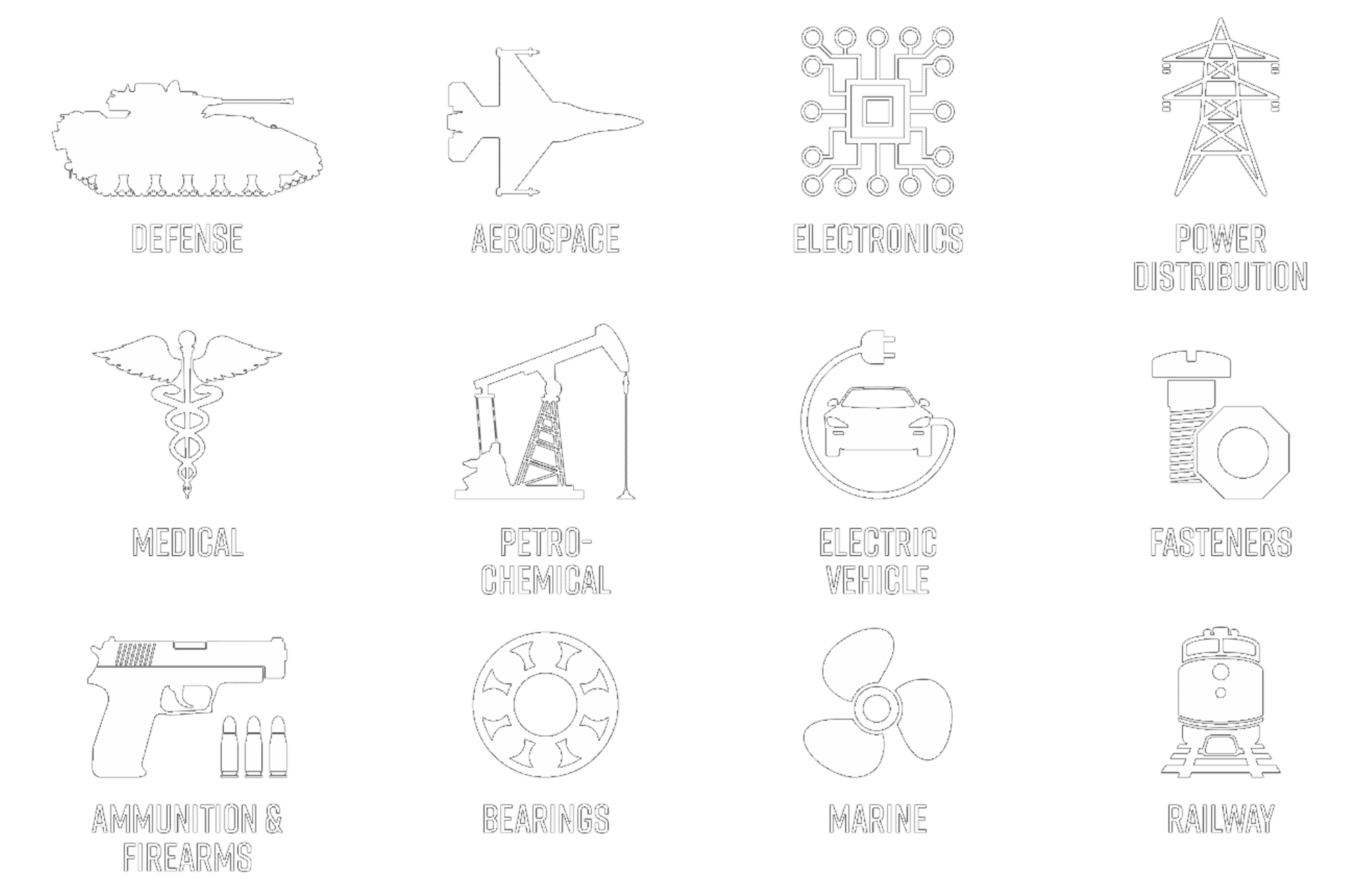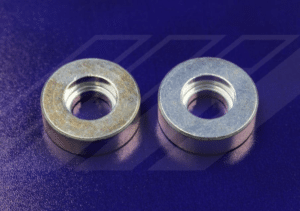Silver Tarnish and Its Properties
Silver plating is often used for cosmetic applications and is found on items such as silverware and jewelry. While silver provides value and an aesthetic appearance to these items, it is also used in multiple sub sectors of manufacturing – Power Transmission, Medical, Aerospace, Electronics, Electric Vehicle and many more. The reasons silver plating is used is vast: ductility, electrical and thermal conductivity, solderability, high temperature lubricity, as well as excellent optical reflectivity. Although there are many positive attributes to silver plating, silver tarnish is one is a common occurrence when the proper steps are not taken.
Silver tarnish occurs when the silver plating is exposed to air or water containing an oxidant and a source of sulfur. This chemical reaction is what forms the silver sulfide on the surface of the part and can turn the white luster finish to a yellow or sometimes a black or brown. Aside from an unpleasant appearance, the tarnish can continue to increase over time. Although the cosmetic aspect of silver tarnish is not typically a desired outcome, silver sulfide is still conductive, which is different than other metal oxides that form over time. However, industries typically desire a more pleasing cosmetic outcome and Advanced Plating Technologies can help avoid silver tarnish through post-plate processes as well as protective packaging.
Two commonly used silver plating specifications, ASTM B700 and AMS 2410, both contain call outs for supplementary anti-tarnish applications. It is crucial to include the instructions on a print or plating call out to ensure that a post-plate anti-tarnish application is provided. Advanced Plating Technologies has a wide vendor base that can locate any specific anti-tarnish application that a job may require. Additionally, packaging options can be put in place to help avoid silver tarnish. These packaging options can be as simple as including desiccant packs with the plated parts to nitrogen bagging. Nitrogen bagging fills the bag of parts with nitrogen and removes the oxygen which plays a key role in forming oxides.
While there are many ways to avoid silver tarnish, two good questions to ask before looking at anti-tarnish applications is how long the parts will be stored and what type of environment the parts will be stored in. By answering these questions APT can ensure that the proper post-plate tarnish application is selected.
Have Questions? Contact us at [email protected] for more information.
By: E. Probasco, Plant Manager







